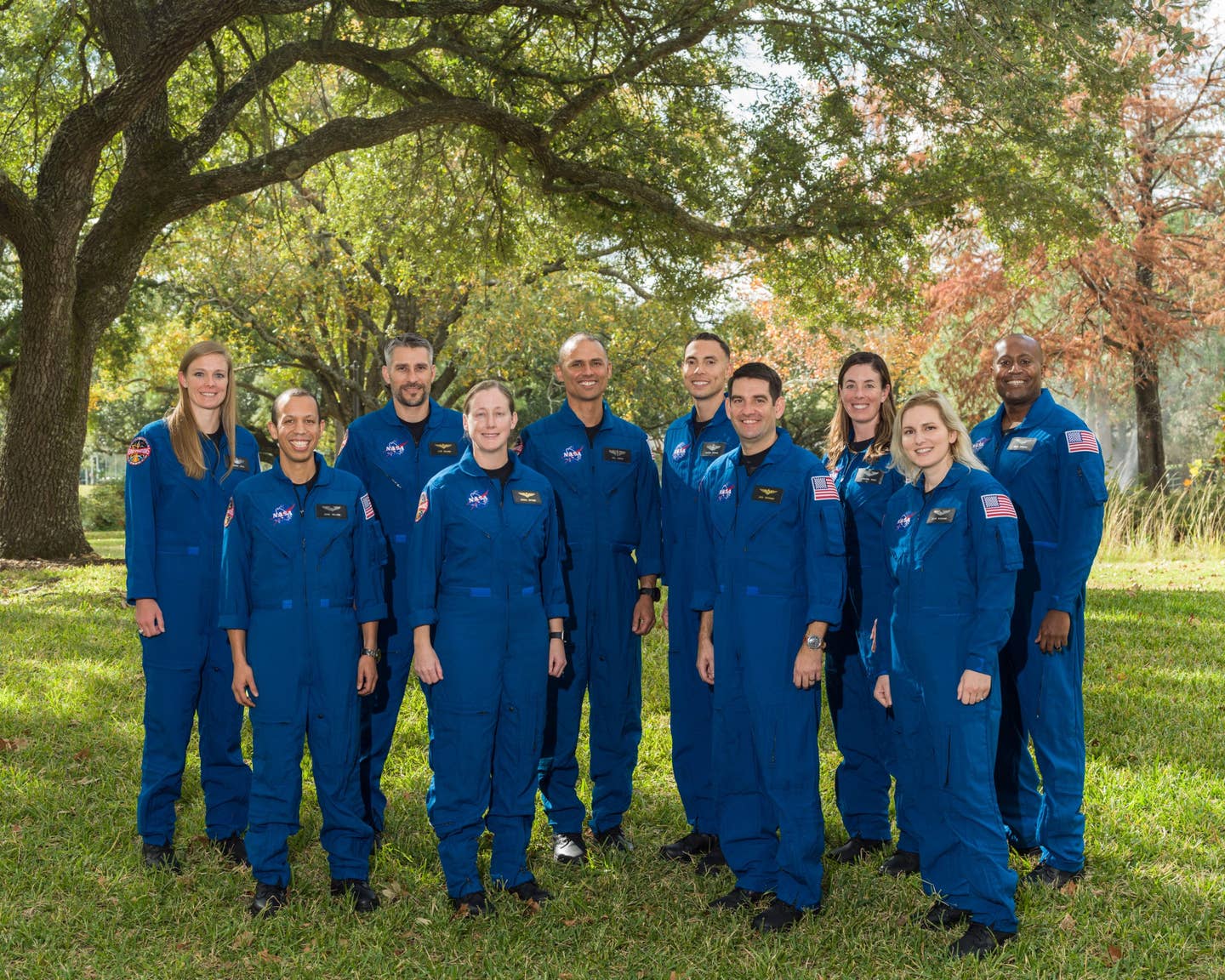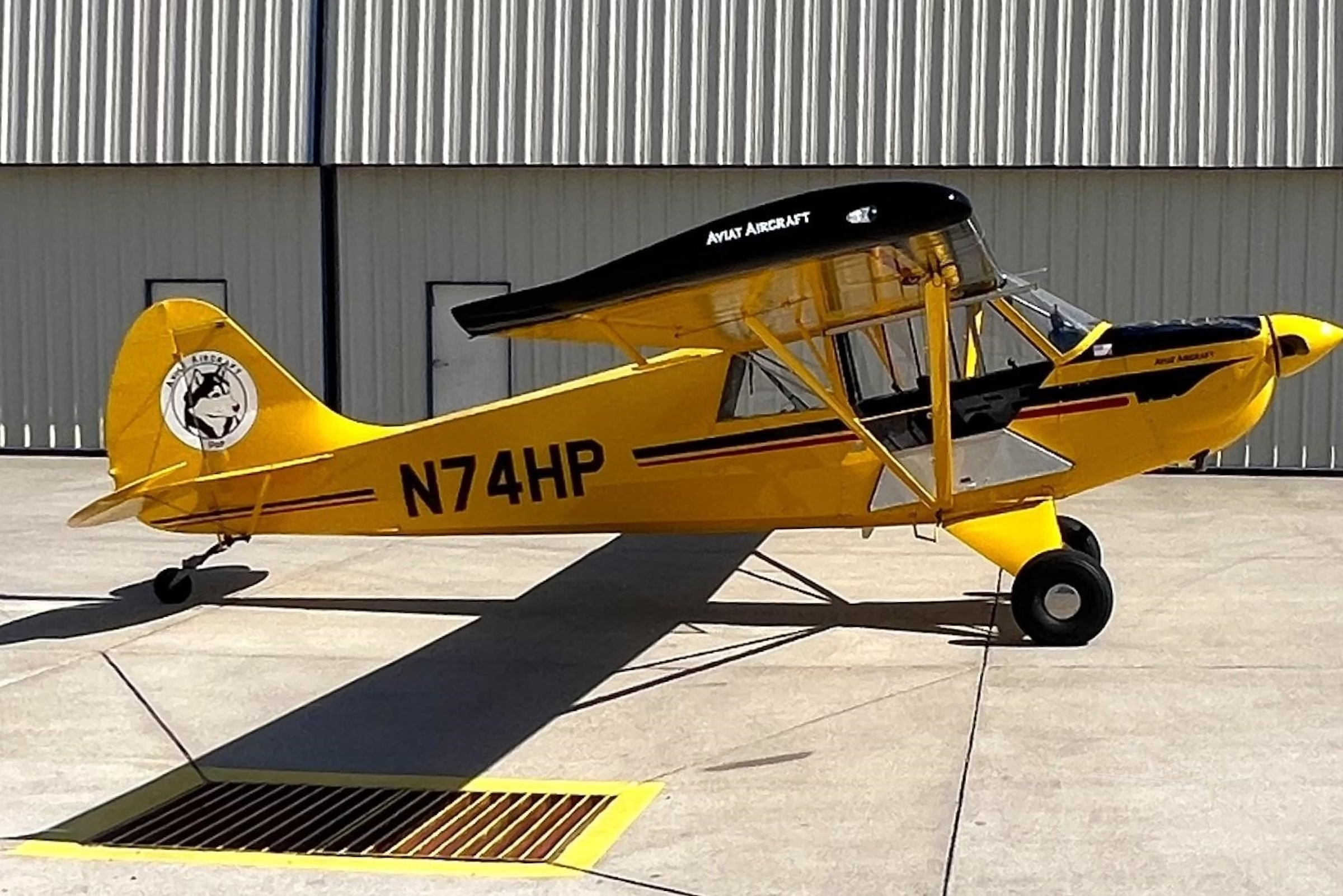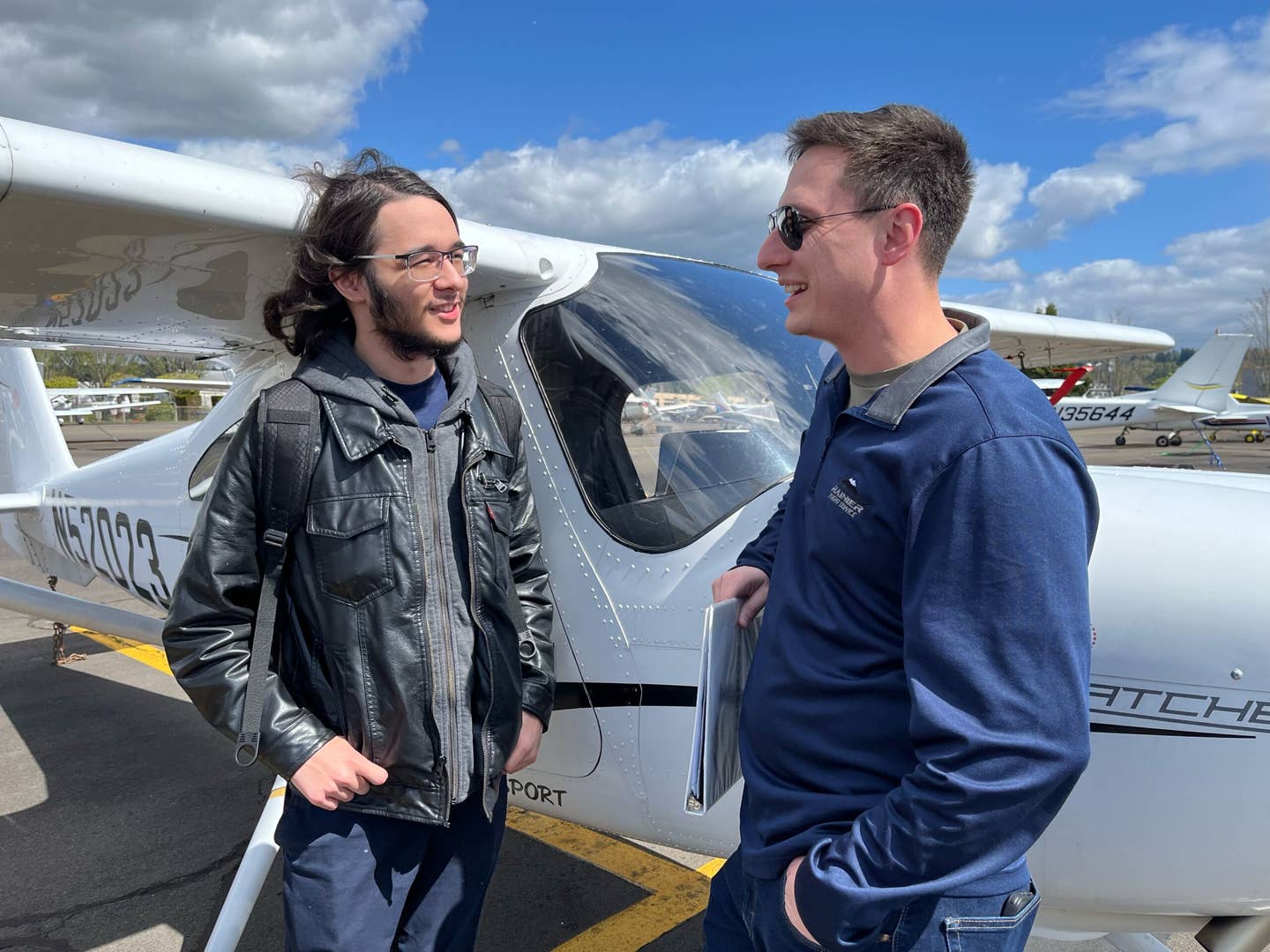Meet NASA’s New Astronaut Recruits
NASA has announced its next class of astronauts for the upcoming Artemis missions to the lunar surface, and eventually, Mars.

NASA announced its 2021 Astronaut Candidate Class on Dec. 6. The 10 candidates, pictured here at NASA’s Johnson Space Center in Houston are: U.S. Air Force Maj. Nichole Ayers, Christopher Williams, U.S. Marine Corps Maj. (retired.) Luke Delaney, U.S. Navy Lt. Cmdr. Jessica Wittner, U.S. Air Force Lt. Col. Anil Menon, U.S. Air Force Maj. Marcos Berríos, U.S. Navy Cmdr. Jack Hathaway, Christina Birch, U.S. Navy Lt. Deniz Burnham, and Andre Douglas. Credit: NASA
NASA has announced its next class of astronauts for the upcoming Artemis missions to the lunar surface, and eventually, Mars.
Out of a field of more than 12,000 applicants, NASA administrator Bill Nelson introduced the first new class in four years at Ellington Field near Houston, Texas.
“Today, we welcome 10 new explorers, 10 members of the Artemis generation, NASA’s 2021 astronaut candidate class,” Nelson said during the event Monday. “Alone, each candidate has ‘the right stuff,’ but together they represent the creed of our country: E pluribus unum—out of many, one.”
Starting in January 2022, the new class will begin two years of training for the upcoming Artemis missions to the moon. Their training will consist of five major categories: operation and maintenance of the International Space Station, spacewalks, complex robotics skills, T-38 Training Jet operation, and Russian language skills.
“Today, we reach further into the stars as we push forward to the moon once again, and on to Mars with NASA’s newest astronaut candidate class.”
Vanessa Wyche, Johnson Center director
The new class will have many opportunities to work in space, including trips to the space station on commercial spacecraft and deep space missions.
“Each of you has amazing backgrounds,” Pam Melroy, former NASA astronaut and NASA’s deputy administrator, told the candidates. “You bring diversity in so many forms to our astronaut corps and you stepped up to one of the highest and most exciting forms of public service.”
This 2021 astronaut class was the first to be selected after NASA required applicants to hold at least a master’s degree in a STEM field. According to NASA, “the women and men selected for the new astronaut class represent the diversity of America and the career paths that can lead to a place in America’s astronaut corps.”
2021 Astronaut Class
Nichole Ayers, 32
Ayers serves as a major in the U.S. Air Force and has more than 200 combat hours as an F-22 Raptor pilot. The Colorado native earned a master’s degree in computational and applied mathematics from Rice University after graduating from the U.S. Air Force Academy. Ayers led the first all-woman F-22 formation in combat in 2019.
Marcos Berríos, 37
Berríos, who grew up in Puerto Rico, serves as a major in the Air Force. While serving in the Air National Guard, Berríos worked as an aerospace engineer for the U.S. Army Aviation Development Directorate at Moffett Federal Airfield in California. He holds a master’s degree in mechanical engineering as well as a doctorate in aeronautics and astronautics from Stanford University. Berríos has flown more than 110 combat missions and has more than 1,300 hours of flight time in over 21 different aircraft.
Christina Birch, 35
Birch, an Arizona native, earned a bachelor’s degree in mathematics as well as biochemistry and molecular biophysics from the University of Arizona. Birch taught bioengineering at the University of California, Riverside, after earning a doctorate in biological engineering from MIT. Birch was also a decorated member of the U.S. National Track Cycling team.
Deniz Burnham, 36
Serving as a lieutenant in the U.S. Navy Reserves, Burnham hails from Wasilla, Alaska. Burnham earned a bachelor’s degree in chemical engineering from the University of California, San Diego, and a master’s degree in mechanical engineering from the University of Southern California. She formerly worked as an intern at NASA’s Ames Research Center in Silicon Valley, California.
Luke Delaney, 42
A retired major in the U.S. Marine Corps, Delaney grew up in Debary, Florida, where he earned a degree in mechanical engineering from the University of North Florida. Later, Delaney earned a master’s degree in aerospace engineering from the Naval Postgraduate School. Delaney flew multiple combat missions in support of Operation Enduring Freedom and also served as a test pilot instructor. Recently, Delaney worked as a research pilot at NASA’s Langley Research Center in Hampton, Virginia.
Andre Douglas, 35
Douglas, a Virginia native, earned a bachelor’s degree in mechanical engineering from the U.S. Coast Guard Academy and a master’s degree in mechanical engineering from the University of Michigan. Douglas holds additional postgraduate degrees in electrical and computer engineering, and systems engineering. He served in the U.S. Coast Guard in multiple roles. Recently, Douglas was a senior staff member at the John Hopkins University Applied Physics Lab.
Jack Hathaway, 39
Commander Hathaway served in the U.S. Navy and is a Connecticut native. He earned bachelor’s degrees in physics and history from the U.S. Naval Academy, furthering his education at the U.S. Naval War College and at Cranfield University in England, where he earned master’s degrees in national security and strategic studies, and flight dynamics, respectively. Hathaway has flown with multiple Navy Strike Fighter squadrons and has over 2,500 flight hours in 30 different types of aircraft.
Anil Menon, 45
Lieutenant Colonel Menon served in the U.S. Air Force as a flight surgeon, logging more than 100 sorties in the F-15 fighter jet. The Minnesota native also served as SpaceX’s first flight surgeon during NASA’s SpaceX Demo-2 mission. Menon previously served as the crew flight surgeon at NASA for multiple expeditions to the space station. Menon is a practicing emergency medicine physician who assisted with medical relief efforts during the 2010 earthquake in Haiti, the 2015 earthquake in Nepal, and the 2011 Reno Air Show accident.
Christopher Williams, 38
Williams, a Maryland native, earned a bachelor’s degree in physics from Stanford University and a doctorate in physics from MIT. A board-certified medical physicist, he completed his residency training at Harvard Medical School and later joined the faculty as a researcher. Williams served as lead physicist for the Dana-Farber Cancer Institute in Boston, spearheading its MRI-guided adaptive radiation therapy program
Jessica Wittner, 38
A lieutenant commander in the U.S. Navy and California native, Wittner served as a naval aviator and test pilot. She earned a bachelor’s degree in aerospace engineering from the University of Arizona and a master’s degree in aerospace engineering from the U.S. Naval Postgraduate School. Wittner commissioned through the Navy’s enlisted-to-officer program where she flew F/A-18 fighter jets with two different Strike Fighter squadrons.
These 10 astronauts become the latest of 360 NASA astronauts named since the 1959 Mercury Seven missions.
“We’ve made many giant leaps throughout the last 60 years, fulfilling President Kennedy’s goal of landing a man on the moon,” said Johnson Center Director Vanessa Wyche at the event. “Today, we reach further into the stars as we push forward to the moon once again, and on to Mars with NASA’s newest astronaut candidate class.”

Sign-up for newsletters & special offers!
Get the latest FLYING stories & special offers delivered directly to your inbox






